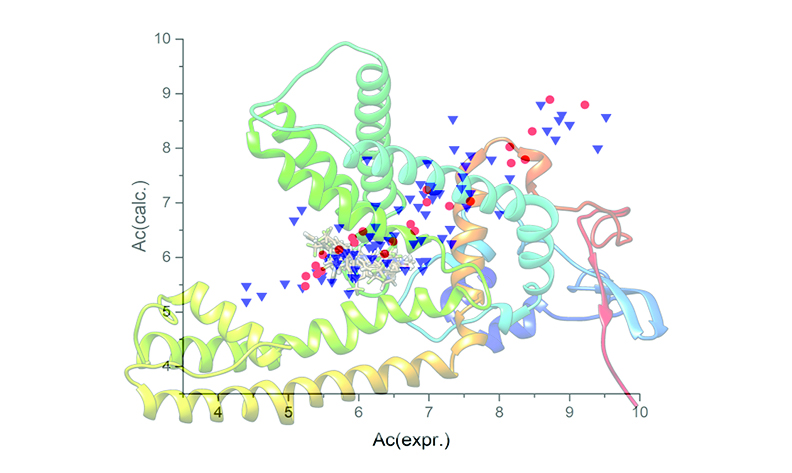Development of Novel Analgesics Related to TRPV1 Antagonism – In Silico Approach
DOI:
https://doi.org/10.17344/acsi.2025.9199Abstract
In the context of pharmacological intervention for pain, Transient Receptor Potential Vanilloid, member 1 (TRPV1), as a non-selective cation channel belonging to the transient receptor potential (TRP) family of ion channels, has emerged as a promising target. However, the availability of selective TRPV1 antagonists and their associated pharmacological properties remains limited. This research paper explores various QSAR modeling techniques applied to a range of piperazinyl-aryl compounds acting as TRPV1 antagonists. The descriptors utilized in the creation of conformation-independent QSAR models included local molecular graph invariants and the SMILES notation, along with the incorporation of the Monte Carlo optimization method as a model development technique. Several statistical methods were employed to evaluate the quality, robustness, and predictive capacity of the developed models, yielding positive results. For the best developed QSAR model following statistical parameters were obtained for training set R2 = 0.7155, CCC = 0.8134, IIC = 0.7430, Q2 = 0.6970, RMSE = 0.645, MAE = 0.489 and F = 157; and for test set R2 = 0.9271, CCC = 0.9469, IIC = 0.9635, Q2 = 0.9241, RMSE = 0.367, MAE = 0.329 and F = 328. Additionally, molecular fragments derived from SMILES notation descriptors, which explain observed changes in the evaluated activity, were identified, leading to the design of four new antagonists. The final validation of the QSAR model and the designed antagonists was conducted through molecular docking, which demonstrated strong correlation with the QSAR modeling results.

Downloads
Published
Issue
Section
License
Copyright (c) 2025 Mladjan Golubovic, Velimir Peric, Marija Stosic, Vladimir Stojiljkovic, Tomislav Kostic, Aleksandar Kamenov, Milan Lazarevic, Dalibor Stojanović, Aleksandar Veselinovic

This work is licensed under a Creative Commons Attribution 4.0 International License.
Except where otherwise noted, articles in this journal are published under the Creative Commons Attribution 4.0 International License
